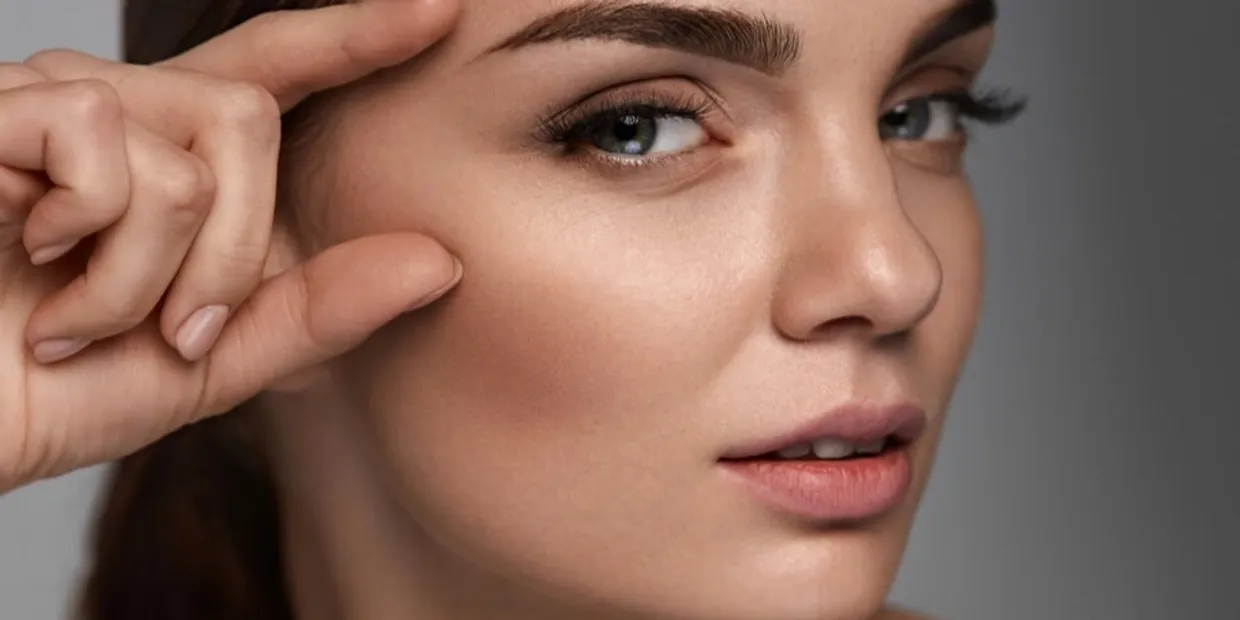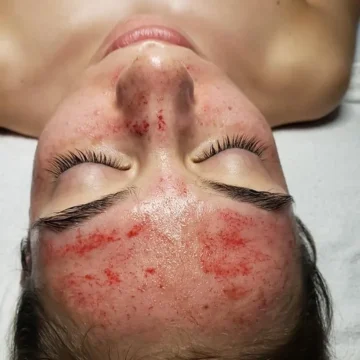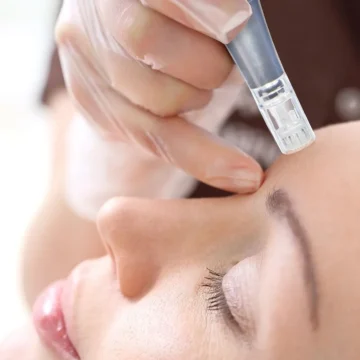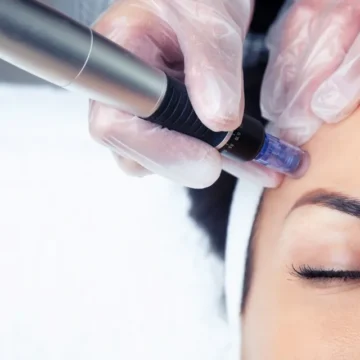Microneedling: Collagen Induction Therapy
Microneedling is also called “collagen-induction therapy” or simply “needling.” This is a gradual treatment that involves needles that puncture your skin.
The idea is that once the pockmark wounds heal, your skin will produce more collagen to naturally fill them and reduce their appearance.
For maximum results, the American Academy of Dermatology (AAD) recommends follow-up treatments every two to six weeks. You’ll likely start seeing significant results within nine months.

Procedure of microneedling
During the procedure, your aesthetician makes small pricks under the skin with a pen-like tool or roll. The pinpricks are so small that you likely won’t notice them after the procedure. Your doctor will move the tool evenly across your skin so that the new skin that rejuvenates will be even.
Before getting started, it will use a topical anesthetic to reduce the chances of pain. This is done about an hour before your treatment. The actual microneedling process takes approximately up 2 hours and including Hydrating/Deep pore facial and double numbing.

How does microneedling work?
Microneedling works by encouraging your skin to make more collagen. The idea is that pinpricks from the procedure cause slight injury to the skin and that the skin responds by making new collagen-rich tissue.
This new skin tissue is, in turn, more even in tone and texture. It’s normal for the skin to lose collagen via age or injury. By encouraging the skin to make new tissue, there may be more collagen to help make the skin firmer, too.
What To Expect After Microneedling
Microneedling isn’t invasive like plastic surgery, so the recovery time is minimal. Most people require very little downtime, if any at all.
You may notice skin irritation and redness within the first few days following the procedure. This is a natural response to the small “injuries” made by the needles in your skin.
You can go back to work or school after the procedure if you’re comfortable. Some people apply camouflaging makeup during the first few days as the redness dissipates.
Your skin will also be more sensitive to the sun, so sunscreen is a must.
After microneedling, your skin works fairly quickly to rejuvenate new tissue. In theory, you should see results within a couple of weeks.
To maintain the results of your treatment, you’ll need multiple sessions and perhaps other complementing treatments. Your doctor will advise you on the best plan of action based on your individual goals.

More About Microneedling

Targeted areas for microneedling
Microneedling is most often used on your face to target:
- acne scars
- age spots (also called “sun spots”)
- fine lines and wrinkles
- large pores
- other types of scars
- reduced skin elasticity
- uneven skin tone
In addition to facial concerns, microneedling is sometimes used to treat stretch marks in other areas of the body. Scarring on other body parts may also be treated with this procedure.
However, microneedling is primarily used on the face.






